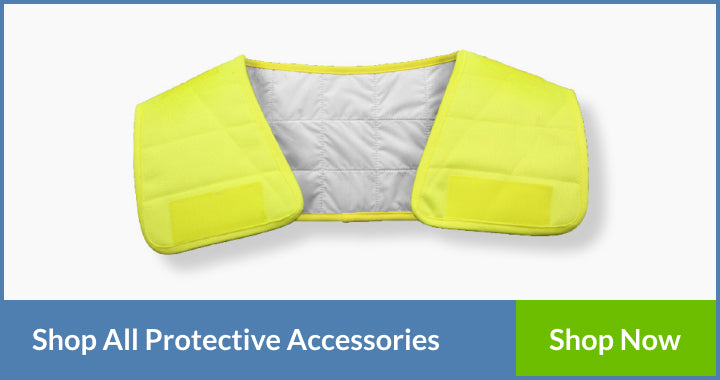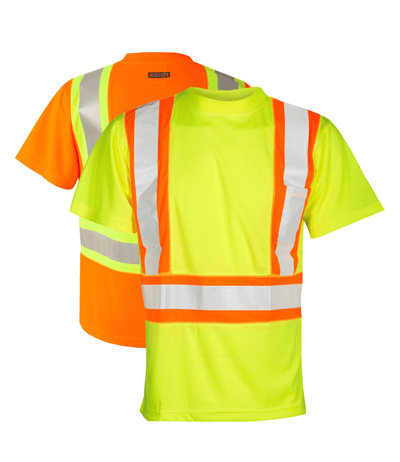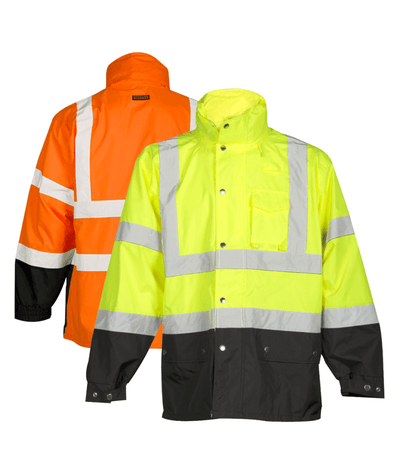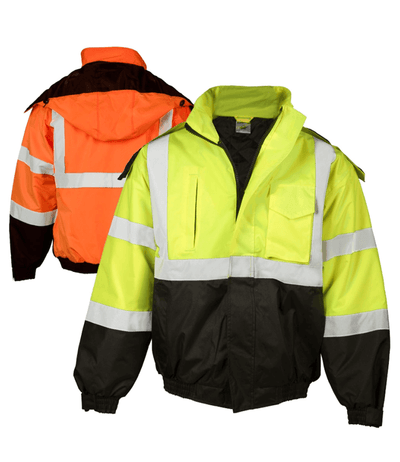Most people go to work during the day and go home before it gets dark, but not all people have careers like this. Some are assigned to work their nights away, while others need to be stationed in areas with low-light conditions. Despite the fact that working in low-light conditions can give way to different kinds of accidents, this kind of job cannot be avoided. With the use of high-visibility clothing, however, accidents caused by low-light hazards can be avoided.
Understanding High-Visibility
Almost everyone has seen high-visibility clothing at least once, especially while on the road. Also known as “hi-viz,” this type of protective clothing encompasses high-visibility garments and accessories. It features retroreflective tapes and a brightly-colored or fluorescent background material, which can be easily seen in any setting. The design of high-visibility clothing can make its wearer more visible to the people around them. In other words, it provides its wearer with conspicuity, which is enhanced by the contrast between the clothing’s colors and the ambient background. Because of this, high-visibility garments are mostly worn by employees who are exposed to hazardous situations in low-light conditions.
The retroreflective tapes of high-visibility clothing can be made of either microprisms or glass beads. Microprismatic tape is a kind of plastic vinyl made of small prisms, which let in light and subsequently return it to its source. The light that this type of tape reflects is highly concentrated, and it also covers a great distance. Glass bead tape, on the other hand, is more commonly used with silver strips found on commercial high-visibility clothing. While glass bead tape is cheaper than microprismatic tape, the light it reflects is less concentrated. Moreover, this reflected light covers a shorter distance than the light that microprismatic tape reflects.
The fluorescent material of high-visibility clothing comes in a wide assortment of colors, such as blue, green, pink, and red. For the purpose of safety, however, it usually sports fluorescent yellow or orange colors, which are more visible than any other color.

Not all retroreflective tapes are fluorescent, and not all fluorescent background materials are retroreflective. For this reason, some high-visibility garments make use of combined-performance retroreflective materials. These materials can be considered both retroreflective and fluorescent.
High-visibility clothing works by means of a reaction between the ultraviolet rays coming from the sun and the clothing’s retroreflective materials and colors. This reaction provides the garment with a glowing appearance, which becomes brighter during dusk or dawn. Apart from the sun’s ultraviolet rays, other light sources such as street lamps and car headlights can be reflected by high-visibility clothing.
Who Should Wear High-Visibility Clothing?
Anyone who is exposed to hazards brought about by low-light conditions should wear high-visibility clothing. The American National Standards Institute (ANSI) established the ANSI/ISEA 107-2010 or the American National Standard for High-Visibility Safety Apparel and Headwear. Under this standard, there are three different types of high-visibility apparel for employees in various industries.
The first type refers to clothing designed for off-road use or Type O apparel. It is made for workers on job sites with vehicles and heavy machinery moving at speeds below 25 miles per hour. These job sites do not include public access highways, roadways, or temporary traffic control (TTC) zones. Thus, Type O apparel is suitable only for those working in oil and gas refineries and mines, warehouses, parking areas, and other similar job sites.
The second type of high-visibility apparel is Type R clothing, which is made for roadway use. It can provide employees on highways, roadways, and TTC zones with visual conspicuity during the day and night. These workers include those exposed to roadway traffic and moving equipment, such as surveyors, roadway construction workers, rail workers, flaggers, traffic control officers, towing operators, airport ground crew, school crossing guards, and toll gate personnel.
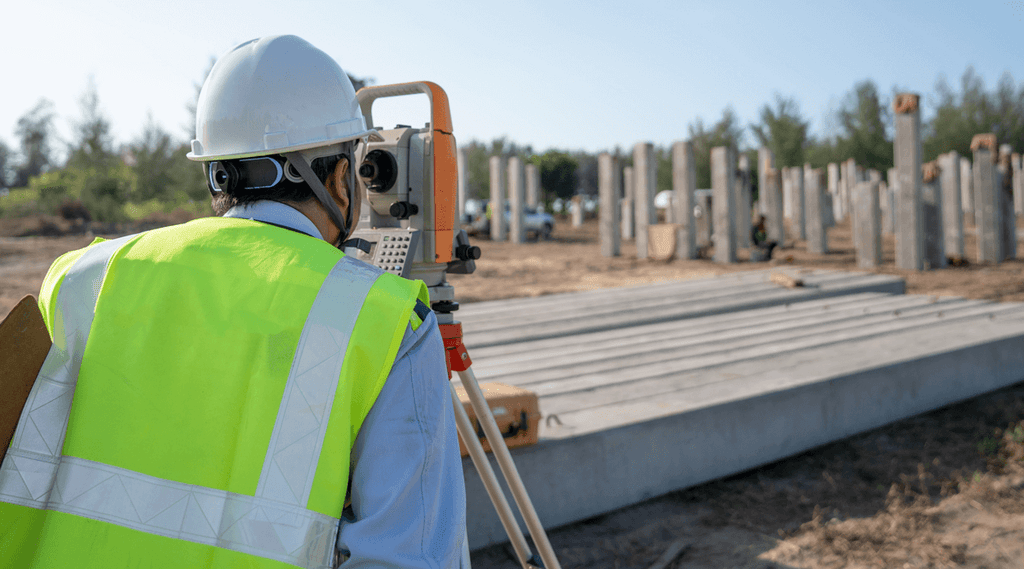
Lastly, Type P apparel refers to the clothing used for public safety. It makes incident responders and law enforcement officers highly visible in traffic zones, highways, roadways, TTC zones, and areas with heavy equipment. Other examples of employees who need to wear Type P clothing include emergency medical technicians, accident site investigators, emergency responders, road closure employees, and firefighters.
Aside from professionals, practically anyone who is exposed to low-light hazards should put on high-visibility clothing. Motorcyclists, cyclists, and runners, for instance, are some of the people who commonly wear high-visibility apparel while on the road. By donning this apparel, they can be easily seen and avoided by motorists.
When Should High-Visibility Clothing Be Worn?
High-visibility clothing is primarily designed to make its wearer highly visible, and there are certain situations wherein putting on this kind of apparel is strictly required. Furthermore, these situations require specific types of high-visibility clothing.
For instance, employees must always be visible in their work environment and background. That’s why employers should determine if the job sites are cluttered or are filled with equipment. They should also consider whether the work environment is situated in an urban or rural area. This way, they can establish the complexity of the job site’s background and choose the appropriate high-visibility apparel.
Another thing to consider is the exposure of workers to traffic hazards. High-speed or high-volume traffic, for example, can affect the visibility of those working on roadways and highways. The length of the employees’ exposure to traffic should also be considered when selecting high-visibility clothing. Additionally, employers should check for the presence of engineering and administrative hazard controls, like barriers that separate workers from traffic.
Artificial light sources, natural light, and weather conditions can also affect the visibility of workers. Fog, rain, snow, overcast skies, and the intensity of sunlight are some of the factors to consider when choosing the type of high-visibility clothing.
Some jobs or tasks require employees to be visually identifiable from others in the area. A perfect example of this is when teams of emergency responders have to be organized during emergencies. For these situations, incident command vests are ideal high-visibility garments to wear as they come in different colors. The colors of these vests can be used to color-code and identify various teams of responders.
Why Do Workers Need to Wear High-Visibility Clothing?
Unlike an office environment with minimal hazards, job sites with moving vehicles and equipment are filled with a considerable amount of hazards, which can possibly cause minor to fatal injuries. In essence, wearing high-visibility clothing can improve the overall safety of employees exposed to low-light hazards. But what are the specific reasons why workers need to be dressed in high-visibility clothing?
1. Industry Standards
For starters, wearing high-visibility clothing is required by various organizations. Because of how grave the consequences of low-light hazards are, several organizations have established standards on high-visibility clothing. These standards, as well as the gravity of low-light hazards, are crucial things that every employer should take seriously.
A. ISO 20471
The International Organization for Standardization (ISO) established the ISO 20471 standard in 2013. This international standard specifies the safety requirements and methods of testing for high-visibility clothing. Basically, this standard talks about how high-visibility workwear should be designed in order to visually identify the presence of wearers. It covers the three main components of high-visibility clothing, namely the fluorescent material, reflective strips, and contrast material.
B. OSHA and FHWA
In 2009, the Occupational Safety and Health Administration (OSHA) released a standard interpretation statement clarifying the necessity of wearing high-visibility workwear. This administration stated that under Title 29 of the Code of Federal Regulations (CFR), flaggers and employees who are exposed to vehicles in excavation sites are required to put on high-visibility garments. Additionally, according to the General Duty Clause or 29 USC 6554, any construction worker in road construction zones should also wear high-visibility apparel.
The Federal Highway Administration (FHWA) supports OSHA’s statement in its Worker Visibility Rule, which states that workers exposed to traffic or construction equipment should be dressed in high-visibility apparel. It also states that this rule is required for the prevention of worker injuries or fatalities caused by vehicles and equipment.
C. ANSI/ISEA
OSHA and FHWA require high-visibility garments to comply with the American National Standards Institute/International Safety Equipment Association (ANSI/ISEA) 107 standard. In 1999, the ANSI released standard 107, which covers the requirements for high-visibility garments. The ISEA developed this standard and revised it in 2004, 2010, and 2015. The latest standard, ANSI/ISEA 107-2015, specifies the different types and performance classes of high-visibility clothing. Each of these types and classes indicates the design of the garments, the workers or wearers, and the specific kind of work environment.
2. Traffic Safety
Needless to say, those working near roads are more susceptible to get involved in vehicular accidents than those working indoors. The severity of road injuries are significantly heightened by dim lighting as it hampers the ability of drivers to avoid collisions. Although more drivers travel during the day, more than half of the traffic fatalities happen at night. Because of how alarming this issue is, it’s crucial for employees who are in close contact with traffic to be dressed in high-visibility clothing.
Since retroreflective materials can reflect cars’ headlights, drivers can easily see workers wearing high-visibility clothing. Moreover, the volume and speed of traffic can obscure the visibility of workers, but high-visibility garments can make wearers stand out. With this type of clothing, employees can avoid getting into accidents caused by oncoming traffic.
3. Construction Safety
Busy construction sites are breeding grounds for all kinds of hazards. Some of these hazards involve moving equipment. From bulldozers to excavators, there are a lot of heavy machines for construction that can accidentally hurt workers. To prevent accidents from happening, putting on high-visibility apparel, such as vests and shirts, is a requirement for construction workers. By wearing these garments, workers can readily visible along the machine operators’ lines of sight.
Apart from getting hit or run over by heavy equipment, getting snagged by machines is also a common occurrence on construction sites. That’s why some safety vests feature breakaway points so that wearers can quickly remove them in case of snagging.
4. Weather Protection
Weather conditions, especially inclement weather, can significantly affect visibility. Rain, snow, fog, and ice make it hard for machine operators and drivers to see the road ahead. In fact, in the U.S. alone, over 30,000 vehicular collisions happen in foggy weather each year. The weather tends to be pretty unpredictable, which is why workers need to always have high-visibility garments with them. Aside from safety vests and shirts, there are high-visibility rainwear and outerwear that employees can choose to put on in cold or inclement weather. When the weather isn’t ideal, these garments can provide them with safety and comfort as well.
5. Identification
When workers wear regular clothing, they can blend into complex backgrounds, making them hard to distinguish from other people and objects. Those working in shipyards, for example, will be difficult to spot among countless freight containers. With high-visibility clothing, employees can easily stand out in hazardous work environments, especially in restricted areas.
How Should You Choose High-Visibility Clothing?
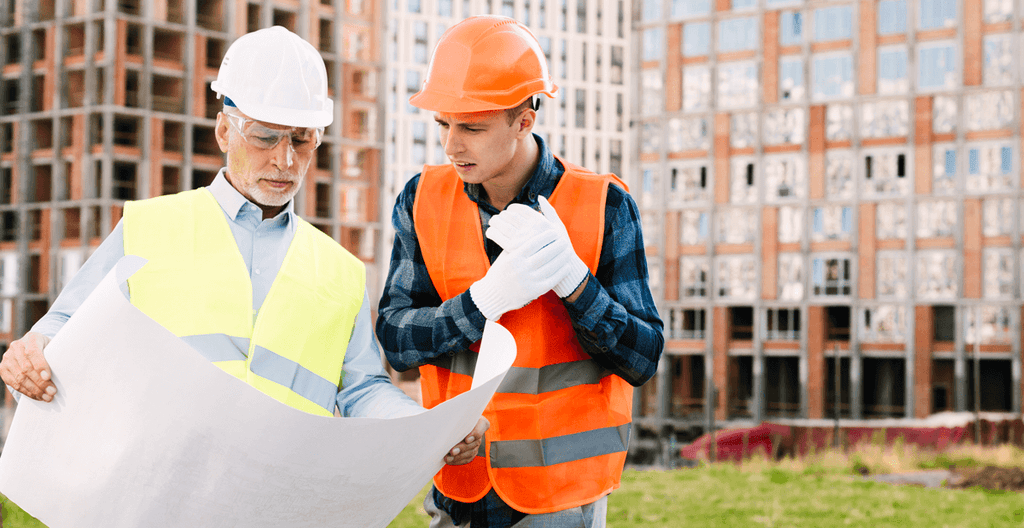
Choosing the right high-visibility garments depends on the conditions of the work environment. These garments come in different designs, levels of brightness, and types of retroreflective materials. The ANSI/ISEA 107-2015 standard categorized the designs of high-visibility clothing under five performance classes. Each of these performance classes has minimum design requirements for retroreflective materials, background materials, combined-performance materials, and photometric performance.
Class 1 apparel is appropriate for off-road use or Type O environments, and it offers the least amount of high-visibility materials. It only requires at least 1-inch wide retroreflective material and 217 square inches of background material. Class 2 garments, on the other hand, need a minimum amount of 775 square inches of background material. Class 3 garments must have at least 1,240 square inches of background material and 2-inch wide retroreflective material. Class 2 and 3 garments can be worn in Type R environments or for roadway use and in Type P environments or for public safety use.
Class E garments refer to high-visibility pants, shorts, gaiters, rainwear, and bibs. These clothes can be worn with Class 2 apparel to meet the requirements of a Class 3 ensemble.
For enhanced visibility, workers can opt to put on high-visibility accessories. Donning these accessories alone won’t qualify for the minimum requirements of Classes 1, 2, or 3. Nevertheless, they will definitely help improve the employees’ safety and even their comfort. These high-visibility accessories include headwear, arm and ankle bands, gloves, and waist bands.
If the job requires specific requirements for workwear, then you might need to take those into consideration as well. For instance, on job sites with arc flash hazards, flame-resistant vests or flame-resistant shirts can protect electricians and other workers against burn injuries.
The fit and comfort of workers should also be considered when choosing high-visibility apparel. In hot, sunny weather, mesh vests can allow air to cool down their wearers, while sun shields can protect them against the harsh rays of the sun.
Before purchasing high-visibility garments, make sure that they are made by top manufacturers. This way, you won’t have to worry about the garments’ durability, comfort, and quality. Moreover, you can have peace of mind knowing that the garments have been tested and approved by ANSI. Engineer Warehouse understands the importance of visibility in workplace safety, which is why we have collected high-visibility garments of established brands. They come in different designs, performance classes, and materials, so you can conveniently select the most suitable apparel for the job.






